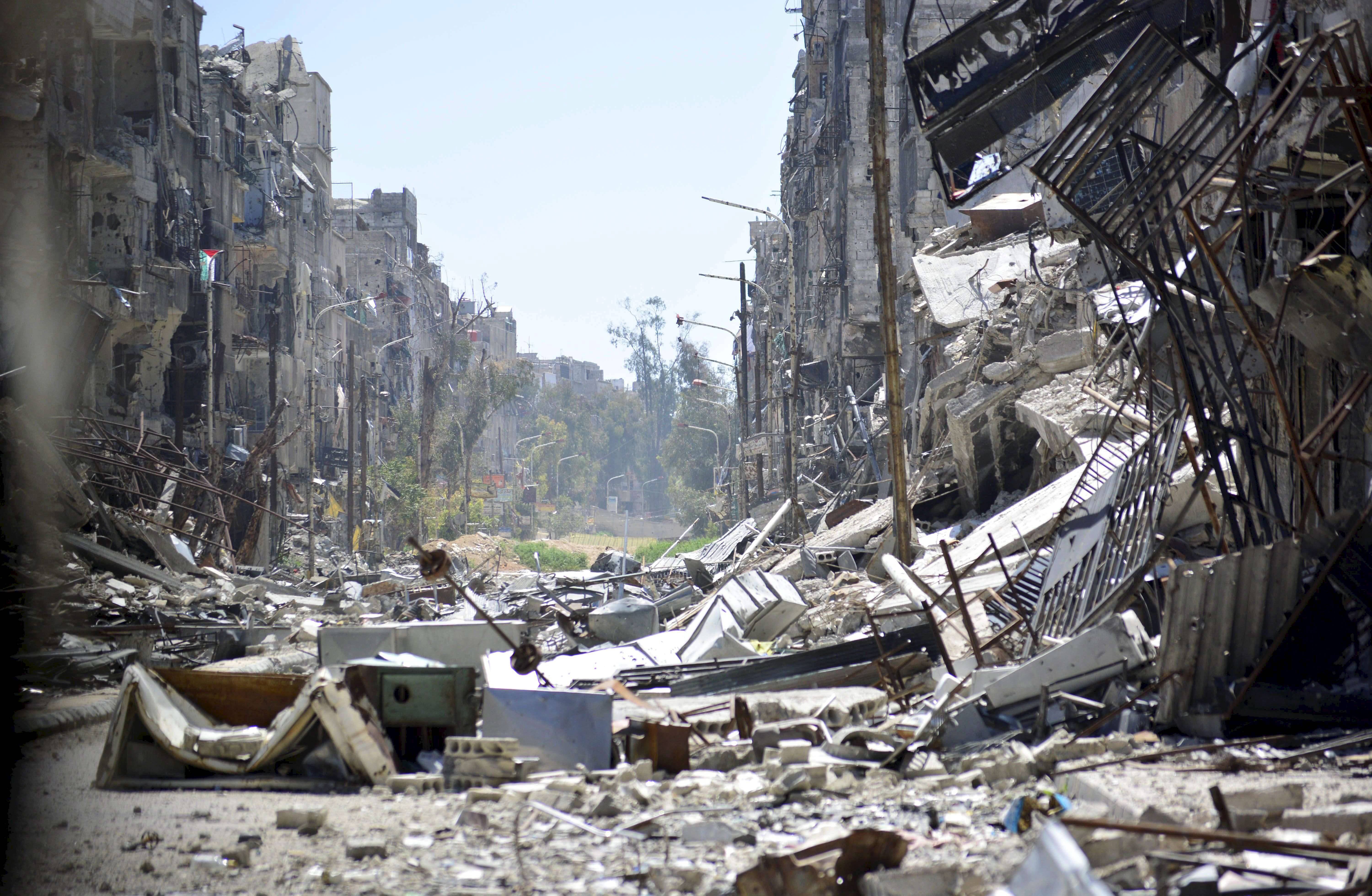
In the early days of April, the Islamic State (ISIS or ISIL) pushed closer to the center of Damascus, the Syrian capital, than they had been able to before. They did this by seizing the majority of the Al-Yarmouk camp, a large refugee district in the southern part of the city. The camp had once held 160,000 refugees from Palestine, but since the beginning of the Syrian Civil War, the refugees have dispersed, leaving 18,000 within the camp.
Even before this ISIS invasion, al-Yarmouk was “a humanitarian nightmare.” The camp was “ruled” by various factions and armed groups, siphoning scarce food away from the refugees and towards the fighters and their families. For the last two years, the camp has been subject to a siege that has made the food situation even more grave. Recently, al-Yarmouk had falled under the control of the Syrian rebel group Nusra Front, whom some eyewitnesses say were fighting alongside ISIS, but who has claimed neutrality in the struggle since. Now, the festering humanitarian crisis in al-Yarmouk has somehow gotten worse. Mere days after this incursion began, reports of killings and beheadings had already circulated. The Syrian government has dropped several barrel bombs on the camp. Just as deadly, United Nations Relief and Works Agency (UNRWA) has been unable to send its usual food or convoys into the camp since the fighting started. This means that the 18,000 residents of the camp have no food, no water, and very little medicine. Moreover, only 93 people have been evacuated, leaving the rest stuck in this deadly zone. If nothing is done, “Yarmouk shall remain a testament to the collective human failure of protecting civilians in times of war.” (Saeb Erekat, as quoted in the New York Times.)
The al-Yarmouk situation sheds light not only on the dangers of ISIS and the plight of Palestinian refugees, but also the inadequacy of international humanitarian law in dealing with such situations. There is an international obligation to protect refugees (1951 Convention relating to the Status of Refugees; 1967 Protocol relating to the Status of Refugees) as well as an obligation to protect civilians in times of war (The Fourth Geneva Convention Relative to the Protection of Civilian Persons in Time of War (1949); Additional Protocol I (1977)). And yet, no one is protecting the 18,000 people trapped in al-Yarmouk. No one, it seems, is even considered responsible for the 18,000 refugees there.
Perhaps the problem is ISIS itself. The Geneva Convention is designed to deal with states. Neither ISIS nor Nusra Front is a state. Therefore, neither feels bound to protect the civilians in al-Yarmouk. It is doubtful whether either would even be held responsible for the harm done to civilians in the course of their battle. While the Syrian government may be held responsible, their attitude (particularly in dropping barrel bombs on the camp) indicates that they feel the refugees are a secondary concern. So when the state who should be responsible refuses to act to protect the civilians and the non-state actors concerned refuse to “stop the fighting” or let others in to evacuate citizens, who under international law is responsible?
This situation highlights perfectly the need to officially implement a Responsibility to Protect. Ideally, the United Nations should be able to send in a force to evacuate the refugees, by force if necessary. If the United Nations cannot or will not act quickly enough, anyone else should have not only the right, but the obligation to do so to protect those 18,000 lives. But while that reformulation of the law is easy—and indeed, already in progress—the next question is both unsettled in law and difficult practically: where would that nation evacuate those refugees to? If al-Yarmouk was already a humanitarian mess before the ISIS invasion, what good would relocating those people to another shabby, hastily constructed camp, with minimal food convoyed to them on a daily basis? Is it as easy to obligate a state to take in 18,000—or 160,000—refugees as to march in and save them from certain death? Is this not a grave oversight in our conception of both a Responsibility to Protect and our refugee law?
I have no good answers to this, but unfortunately, the refugees of al-Yarmouk do not have the luxury to wait for good answers. Our international humanitarian law is not equipped to handle this—so we must use the law that we have and create the rest after, based on our victories or mistakes from this situation. If we do not, al-Yarmouk, as Mr. Erekat has said, “shall remain a testament to the collective human failure of protecting civilians in times of war.”
Samantha Peaslee is a 3L at the University of Denver Sturm College of Law. She is the Senior Managing Editor for the Denver Journal of International Law and Policy.


